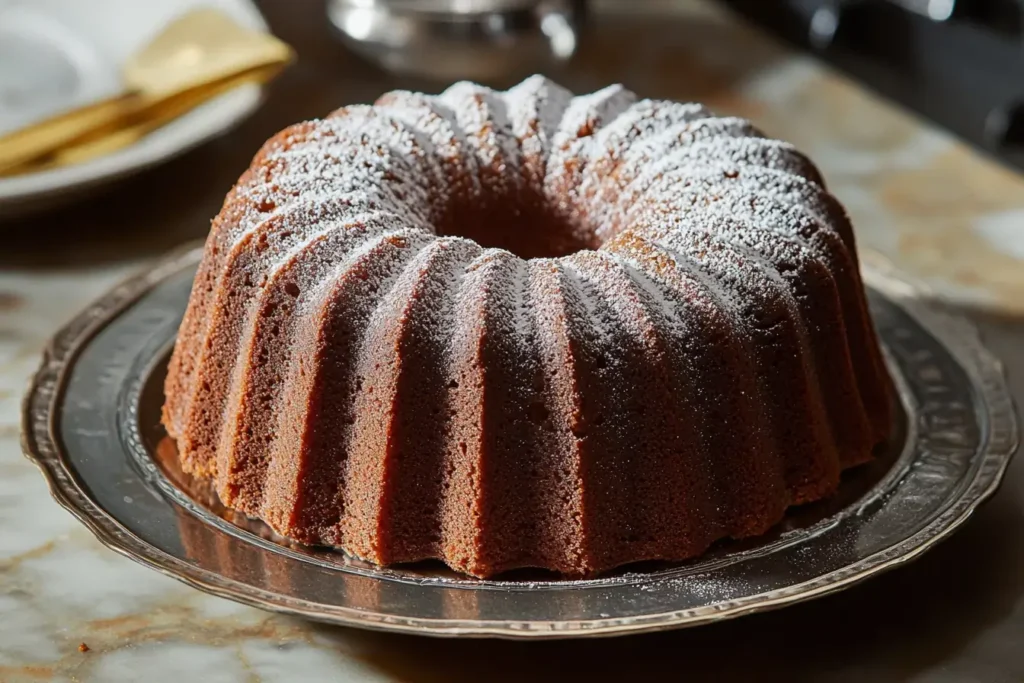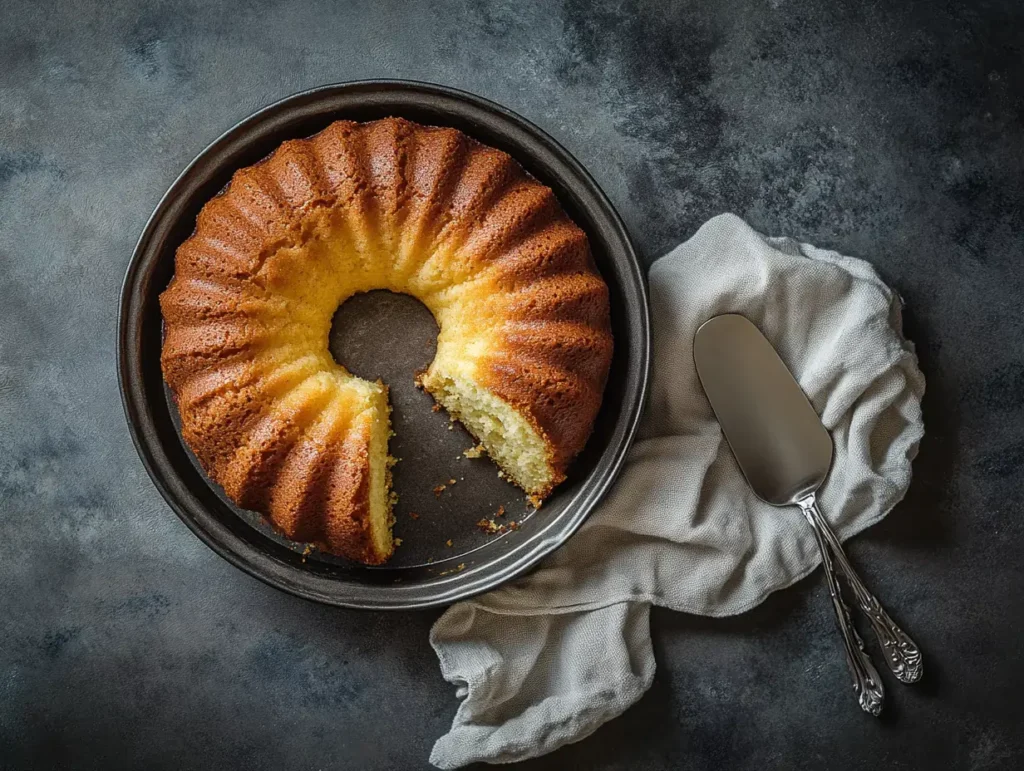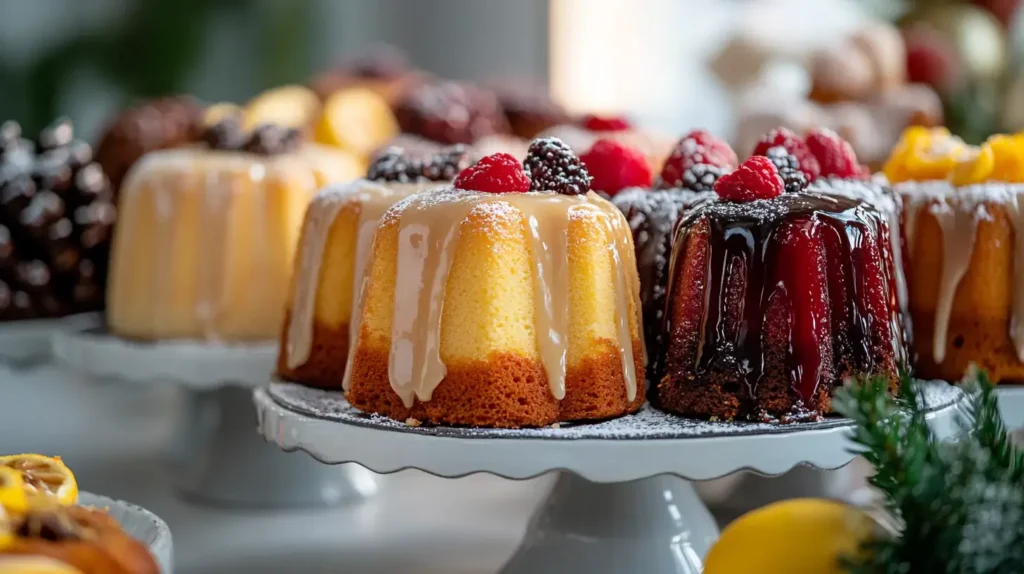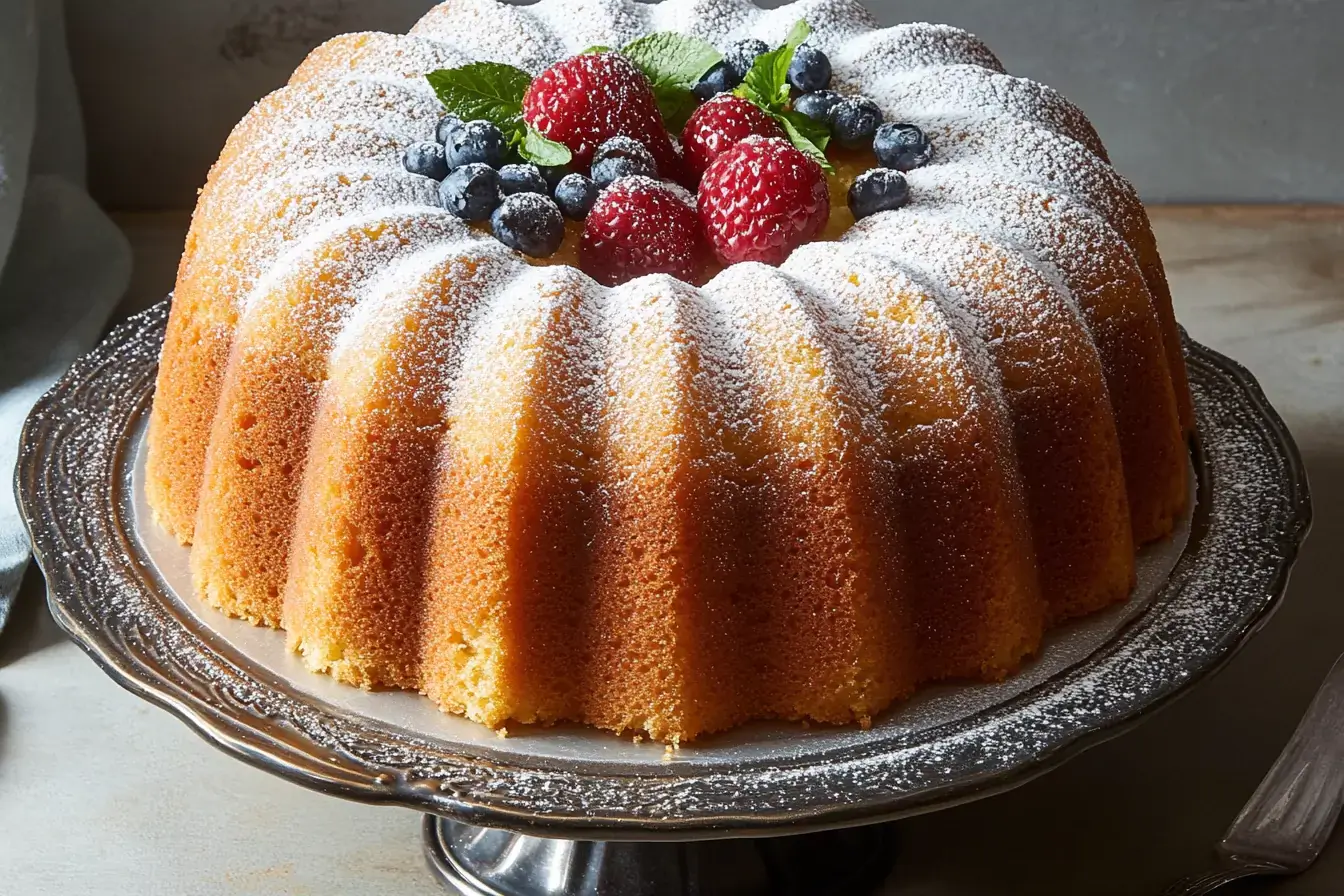Why a Cold Oven Is the Secret to a Better Pound Cake

Introduction
Cold Oven Pound Cake is a timeless treat, cherished for its dense yet tender crumb and rich, buttery flavor. While traditional baking wisdom often emphasizes preheating the oven, there’s a surprising secret to achieving an even better pound cake: starting in a cold oven.
What is a cold oven? Simply put, it’s a baking technique where you place your cake in an oven that hasn’t been preheated. Consequently, as the oven gradually heats, the pound cake batter undergoes a slower, more even transformation. As a result, this method produces a cake that’s moist, evenly baked, and free from common issues like cracks or overbrowning.
In this article, we’ll delve into the science behind this unique method, its benefits, and how you can use it to elevate your pound cake game. Whether you’re a seasoned baker or new to the kitchen, the cold oven technique might just become your go-to method for creating bakery-quality pound cakes.
Table of Contents
The Science Behind Baking Pound Cake in a Cold Oven
How Heat Gradually Impacts Pound Cake Batter
Starting your pound cake in a cold oven allows the batter to warm up slowly as the oven heats. Consequently, this gradual increase in temperature gives the cake more time to rise evenly, ultimately resulting in a consistent texture and height.
Unlike preheated ovens, which can create a sudden burst of heat, the cold oven method minimizes the risk of the cake’s surface setting too quickly while the center remains undercooked.
The Role of Sugar and Butter in the Cold Oven Technique
The sugar and butter in pound cake batter play a crucial role during baking:
- Butter: As the oven heats slowly, the butter melts gradually, evenly distributing moisture throughout the cake.
- Sugar: The slow heating process allows the sugar to caramelize gently, enhancing the flavor and creating a golden crust without overbrowning.
The Gradual Expansion of Air Pockets
When using the cold oven method, the batter’s air pockets expand more slowly, which:
- Prevents large cracks from forming on the cake’s surface.
- Creates a fine, tender crumb texture that’s characteristic of a perfect pound cake.
- Ensures even baking from the center to the edges.
Benefits of Using a Cold Oven for Pound Cake
Promotes Even Baking
One of the standout benefits of the cold oven method is the even distribution of heat. Because the oven warms gradually, the entire cake bakes uniformly:
- Center and Edges Cook Simultaneously: No more underbaked centers or overcooked edges.
- Minimized Hot Spots: The gradual heat buildup ensures every part of the cake gets equal attention.
This method is particularly beneficial for pound cakes, which have a dense batter that requires slow, steady heat to cook through.
Prevents Overbrowning of the Crust
Traditional baking methods can sometimes result in a crust that’s too dark or even burnt by the time the cake is fully baked. The cold oven method avoids this issue by:
- Allowing the cake’s interior to warm up alongside the crust.
- Creating a golden-brown exterior that’s perfectly crisp but not overly dark.
Ensures a Tender and Moist Crumb
The slow baking process helps retain more moisture in the cake. As the butter melts gradually, it releases its fat evenly throughout the batter, ensuring the cake remains rich and moist. Furthermore:
- Sugar Dissolves Gradually: This prevents the cake from becoming overly dense.
- Air Pockets Expand Steadily: Leading to a delicate and tender crumb.
Reduces the Risk of Cracks
Cracks on the surface of pound cakes often occur when the batter sets too quickly due to sudden exposure to high heat. With the cold oven method:
- The batter has time to rise and expand without setting prematurely.
- The cake surface remains smooth and flawless, adding to its visual appeal.
How to Bake a Pound Cake in a Cold Oven
Choosing the Right Recipe
Not all pound cake recipes are suitable for the cold oven method. Opt for traditional recipes that emphasize:
- Dense Batter: Recipes with a higher ratio of butter, sugar, and eggs to flour work best.
- No Chemical Leaveners: Avoid recipes relying on baking powder or baking soda, as these ingredients activate quickly and are more suited to preheated ovens.
Classic butter-based pound cakes are ideal candidates for this technique.
Preparing Your Ingredients
Proper preparation is key to success:
- Room Temperature Ingredients: Ensure butter, eggs, and dairy are at room temperature for smooth mixing.
- High-Quality Butter and Sugar: These are essential for achieving a rich flavor and moist crumb.
- Accurate Measurements: Use a kitchen scale to measure ingredients precisely.
Steps to Properly Use the Cold Oven Technique
Follow these steps for a perfect pound cake:
- Grease and Prepare the Pan: Generously coat the pan with butter or non-stick spray and dust with flour to prevent sticking.
- Mix the Batter Correctly:
- Cream butter and sugar until light and fluffy.
- Add eggs one at a time, ensuring each is fully incorporated.
- Alternate adding dry and wet ingredients, mixing just until combined.
- Pour Batter into the Pan: Smooth the top with a spatula to ensure even baking.
- Place in a Cold Oven: Do not preheat. Position the cake on the center rack.
Adjusting Baking Time for the Cold Oven Method
Baking in a cold oven requires more time than traditional methods:
- Start the Oven at 325°F: Turn on the oven only after placing the cake inside.
- Bake for 70–90 Minutes: Exact time depends on the size and recipe of your pound cake.
- Check for Doneness: Insert a skewer or toothpick into the center; it should come out clean or with a few moist crumbs.
Patience is key—resist the urge to open the oven door too soon, as this can disrupt the gradual heat buildup.
If you’re a fan of rich flavors, try our Chocolate Pound Cake Recipe: Moist and Decadent to explore how the cold oven technique works beautifully with chocolate-infused batters

Common Mistakes and How to Avoid Them
Starting with the Oven Too Hot
One of the most common errors is preheating the oven out of habit. This can lead to:
- A crust that forms too quickly, preventing the batter from rising evenly.
- A dense or unevenly baked cake.
How to Avoid It: Always place your pound cake in a completely cold oven and turn it on only after the cake is inside.
Using the Wrong Type of Pan
The choice of pan greatly affects the success of your pound cake. For instance, using the wrong type of pan can result in sticking or uneven baking.
How to Avoid It:
- Use a high-quality metal pan for even heat distribution.
- Avoid dark-colored pans, which can overcook the crust.
- Ensure the pan is the right size to prevent overflow or underbaking.
Overmixing or Undermixing the Batter
Improper mixing affects the cake’s texture:
- Overmixing: Leads to a dense and tough cake by overdeveloping gluten.
- Undermixing: Results in uneven distribution of ingredients, causing lumps or dry spots.
How to Avoid It:
- Cream butter and sugar thoroughly to aerate the batter.
- Mix just until the dry and wet ingredients are combined—don’t overdo it.
Not Monitoring Baking Progress
With the cold oven method, it’s easy to underestimate how long the cake will take to bake or to forget to check on its progress.
How to Avoid It:
- Set a timer to remind yourself to check for doneness after the minimum baking time.
- Use visual cues (a golden crust, edges pulling away from the pan) and a toothpick test to confirm the cake is ready.
Other Cakes That Benefit from the Cold Oven Technique
The cold oven method isn’t just for pound cakes; in fact, it works well for several other types of dense and rich cakes.
Classic Butter Cakes
Butter cakes, known for their tender texture and buttery flavor, can greatly benefit from the cold oven method. Specifically, the gradual heating allows the butter to melt evenly, creating a moist and delicate crumb:
- Allows the butter to melt evenly, creating a moist crumb.
- Prevents overbrowning, which is common in these cakes due to their high sugar content.
Pound Cake Variations
Variations of pound cake, such as lemon, chocolate, or marble, also respond well to this method. The cold oven technique ensures:
- Consistent baking for cakes with added ingredients like cocoa powder or citrus juice.
- Enhanced flavor development as the cake bakes slowly.
Dense Fruit Cakes
Fruit cakes with heavy batters, often packed with dried fruits and nuts, bake beautifully in a cold oven. Moreover, the slow baking process:
- Allows the batter to cook evenly without burning the fruit or caramelizing the sugar too quickly.
- Ensures a moist and flavorful interior.
Cakes with Heavy Batters
Any cake with a dense batter, such as:
- Cream Cheese Pound Cake: The cold oven prevents cracking and helps retain moisture.
- Sour Cream Coffee Cake: Ensures even baking without drying out the layers.
These cakes thrive under gradual heat, allowing their flavors and textures to fully develop.

FAQs
Why Does Starting in a Cold Oven Work Better for Pound Cake?
Starting in a cold oven allows the cake batter to warm up gradually as the oven heats. This slow process:
- Ensures even rising and baking.
- Prevents the crust from setting too quickly, reducing the risk of cracks.
- Retains more moisture, resulting in a tender and rich crumb.
How Long Does It Take to Bake a Pound Cake in a Cold Oven?
Fruit cakes with heavy batters, often packed with dried fruits and nuts, bake beautifully in a cold oven. In fact, the slow baking process allows the dense batter to cook evenly without burning the fruit or caramelizing the sugar too quickly
Can I Use the Cold Oven Method for Other Baked Goods?
Yes, the cold oven method works well for:
- Dense cakes like fruit cakes, butter cakes, and Bundt cakes.
- Recipes that don’t rely on quick-acting leaveners like baking powder or baking soda.
It’s not recommended for light, airy cakes like sponges or chiffon, as they require rapid heat for proper rising.
Does the Cold Oven Method Affect the Cake’s Texture?
Yes, positively! The cold oven method creates a finer, more tender crumb by:
- Allowing air pockets in the batter to expand gradually.
- Preventing rapid crust formation, leading to an even texture throughout.
What Type of Pan Works Best for Cold Oven Baking?
The best pans for cold oven baking are:
- Light Metal Pans: These distribute heat evenly and prevent overbrowning.
- High-Quality Non-Stick Pans: Ensure easy release and minimal sticking.
Avoid glass or dark pans, as they can cause uneven baking or an overly dark crust.
Conclusion
Baking a perfect pound cake doesn’t have to be a challenge, especially with the cold oven technique. By starting in a cold oven, you allow the batter to warm gradually, ensuring even baking, a tender crumb, and a beautifully golden crust. This method is particularly effective for dense cakes like classic pound cakes, butter cakes, and fruit cakes, giving them a moist texture and enhanced flavor.
The secrets lie in choosing the right recipe, carefully preparing your ingredients, and fully understanding how the gradual heat transformation impacts the batter. Moreover, with a bit of patience and consistent attention to detail, you can effortlessly achieve bakery-quality pound cakes that are sure to impress every time
Are you ready to test this unique technique? If so, start with your favorite pound cake recipe, and soon you’ll discover why a cold oven truly is the secret to a better pound cake. Finally, happy baking!

